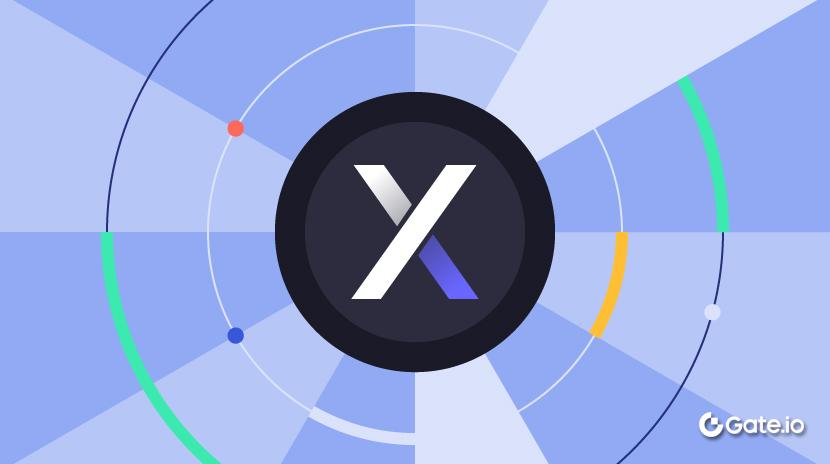Apa itu Walrus (WAL)?
Pengantar
Walrus adalah protokol penyimpanan dan ketersediaan data terdesentralisasi yang dibangun di atas blockchain Sui, dirancang untuk menyimpan objek biner besar—yang disebut blob—di seluruh jaringan terdistribusi. Ini memisahkan manajemen metadata dari penyimpanan blob menggunakan blockchain untuk logika kontrol dan mengandalkan komite yang didedikasikan dari node penyimpanan untuk data mendasar. Walrus mengkodekan file menggunakan pengkodean erasure, membagi setiap blob menjadi serpihan yang tersebar di seluruh node, memungkinkan pemulihan data bahkan jika beberapa node tidak tersedia atau bersifat jahat. Kapasitas penyimpanan direpresentasikan sebagai objek yang dapat diprogram di Sui, memungkinkan kontrak untuk memiliki, membagi, dan mentransfer sumber daya penyimpanan. Protokol ini menggunakan mekanisme DeleGate.comd Proof of Stake (dPoS), di mana node penyimpanan mempertaruhkan token WAL untuk berpartisipasi dan menerima imbalan berdasarkan kinerja.
Apa itu Walrus (WAL)?

Walrus adalah protokol penyimpanan terdesentralisasi dan ketersediaan data yang dirancang untuk mengelola file biner besar secara efisien, umumnya disebut sebagai 'blobs.' Dibangun di atas blockchain Sui, Walrus memungkinkan aplikasi untuk mempublikasikan, mengelola, dan memprogram file data seperti video, gambar, dan PDF. Protokol ini berfokus pada menyediakan solusi yang handal dan hemat biaya untuk menyimpan konten tak terstruktur di jaringan terdistribusi dari node penyimpanan, memastikan ketersediaan dan keandalan data bahkan dalam kehadiran kesalahan atau pelaku jahat.
Yayasan Walrus, yang bertanggung jawab atas pengembangan dan promosi protokol Walrus, didirikan untuk memajukan solusi penyimpanan terdesentralisasi. Kepemimpinan yayasan termasuk Rebecca Simmonds sebagai Manajer Eksekutif. Proyek menerima bimbingan teknis dari Mysten Labs, pencipta blockchain Sui, menunjukkan upaya kolaboratif antara kedua organisasi tersebut.

Pada Maret 2025, Yayasan Walrus mengumumkan penjualan token swasta senilai $140 juta yang dipimpin oleh Standard Crypto. Investor terkemuka berpartisipasi dalam putaran pendanaan, termasuk lengan kripto Andreessen Horowitz (a16z crypto), Electric Capital, Franklin Templeton Digital Assets, RW3 Ventures, Creditcoin, Lvna Capital, Protagonis, Karatage, Comma3 Ventures, dan The Raptor Group. Investasi substansial ini menggarisbawahi keyakinan akan potensi Walrus untuk mengatasi tantangan infrastruktur dalam penyimpanan data terdesentralisasi.
Dana yang terkumpul dimaksudkan untuk mempercepat ekspansi dan pemeliharaan protokol Walrus, dengan tujuan mengubah penyimpanan data menjadi sumber daya interaktif dan dapat diprogram. Peluncuran mainnet Walrus dijadwalkan pada 27 Maret 2025, membuka kemungkinan baru untuk aplikasi yang beragam mulai dari dataset AI dan file media kaya hingga situs web dan arsip blockchain.
Fitur Utama Walrus
Stake WAL

Walrus adalah protokol terdesentralisasi untuk menegakkan ketersediaan penyimpanan melalui bukti kriptografis dan insentif ekonomi. Token WAL digunakan sebagai unit akun untuk staking, partisipasi, dan distribusi imbalan di seluruh jaringan. Setiap node penyimpanan yang berpartisipasi dalam menyimpan dan melayani data harus melakukan staking token WAL. Persyaratan ini memastikan akuntabilitas dan menegakkan disiplin ekonomi. Node tanpa staking dilarang menyimpan data atau menghasilkan imbalan.
Setiap node penyimpanan terdaftar on-chain dengan kontrak pintar yang mencatat identitas operator dan mengaitkan node dengan validator pada blockchain Sui. Jumlah WAL yang dipertaruhkan oleh node memengaruhi kelayakan dan bagian imbalan. Staking wajib untuk aktivasi, dan protokol menegakkan persyaratan taruhan minimum untuk membatasi serangan sybil. Jika node bertindak tidak jujur atau menjadi tidak tersedia untuk periode yang diperpanjang, token yang dipertaruhkan dapat dipotong. Mekanisme ini mengurangi kemungkinan layanan berkualitas buruk dan memastikan bahwa operator memiliki paparan keuangan terhadap keandalan infrastruktur mereka.
Model staking Walrus dibangun di sekitar desain deleGate.comd bukti-stake (dPoS). Pemegang WAL yang tidak mengoperasikan node sendiri dapat deleGate.com token ke node penyimpanan. Delegasi meningkatkan stake efektif node dan meningkatkan kapasitasnya untuk menerima penugasan blob. Delegator mendapatkan bagian dari hadiah yang didistribusikan ke node, berdasarkan bagian mereka dari total stake. Ini memungkinkan pemegang WAL untuk berpartisipasi dalam protokol tanpa mengoperasikan infrastruktur sambil berkontribusi dalam pemilihan penyedia yang berkinerja tinggi.
Walruscan

Walruscan adalah penjelajah blockchain yang dirancang untuk memantau dan memverifikasi status operasional jaringan penyimpanan Walrus. Ini memberikan akses langsung ke metadata penyimpanan, bukti ketersediaan, distribusi sliver, catatan staking, dan kebijakan tingkat blob. Antarmuka menghubungkan data on-chain yang direkam di Sui dengan tindakan penyimpanan off-chain yang dilakukan oleh node-node terdaftar. Ini terstruktur untuk mendukung pengembang, penyedia penyimpanan, dan delegator dalam meninjau aktivitas protokol dan perilaku ekonomi tanpa perlu mengakses infrastruktur internal atau API.
Penjelajah ini mencakup fungsionalitas untuk memeriksa setiap blob terdaftar yang disimpan melalui Walrus. Setiap blob terdaftar di Sui melalui objek metadata yang mengkodekan informasi seperti ukuran blob, persyaratan replikasi, ketersediaan saat ini, jumlah sliver, dan peta distribusi. Walrus dapat mengambil data on-chain ini dan merendernya dalam antarmuka visual yang menampilkan status setiap blob, termasuk berapa banyak sliver online dan node penyimpanan mana yang memegangnya. Ini memungkinkan pengguna untuk menilai apakah sebuah file tetap dapat diakses, telah mencapai target redundansi, atau memerlukan realokasi.
Walruscan mengintegrasikan informasi tentang bukti ketersediaan yang diajukan oleh node. Selama setiap epoch, node secara berkala diuji untuk membuktikan bahwa mereka terus menyimpan slivers yang ditugaskan mereka. Bukti-bukti ini dicatat on-chain, dan Walruscan menggabungkannya per node dan per blob. Penjelajah melacak apakah bukti-bukti telah diajukan, berapa banyak tantangan yang berhasil dijawab, dan apakah terjadi kegagalan. Log ini digunakan untuk menentukan kelayakan imbalan dan tersedia untuk pemeriksaan pihak ketiga. Pengguna dapat memeriksa riwayat bukti blob atau memantau kinerja node penyimpanan tertentu.
Penjelajah juga mengekspos data penempatan dan delegasi. Untuk setiap node penyimpanan, Walruscan menunjukkan jumlah WAL yang dipasang, berapa banyak yang telah didelegasikan oleh pemegang eksternal, dan berapa banyak blob yang saat ini didukung oleh node tersebut. Ini mencakup data historis tentang distribusi imbalan dan insiden pemangkasan. Delegator dapat meninjau keandalan node sebelum menetapkan token, dan operator dapat menggunakan penjelajah untuk melacak metrik kinerja di seluruh epoch. Transparansi ini memungkinkan peserta ekonomi untuk menyesuaikan strategi mereka berdasarkan data publik, daripada klaim yang tidak dapat diverifikasi.
Arsitektur Teknis Walrus
Walrus memisahkan tanggung jawab kontrol dan penyimpanan di dua lapisan yang berbeda: lapisan metadata dan koordinasi on-chain yang dibangun di atas Sui, dan lapisan penyimpanan off-chain yang terdiri dari node penyimpanan yang dioperasikan secara independen. Lapisan kontrol menggunakan kontrak pintar untuk mendaftarkan metadata blob, menegakkan aturan akses, melacak pendaftaran node, dan mengelola staking dan slashing. Lapisan penyimpanan bertanggung jawab untuk benar-benar menyimpan konten biner blob, yang dibagi menjadi bagian-bagian lebih kecil dan disimpan secara redundan menggunakan pengkodean erasure.
Ketika seorang pengguna mengunggah blob ke Walrus, file tersebut dipecah menjadi potongan-potongan berukuran tetap. Setiap potongan diproses dengan pengkodean erasure untuk membuat beberapa serpihan. Sebagian dari serpihan ini sudah cukup untuk merekonstruksi potongan asli. Sebagai contoh, konfigurasi umum akan memungkinkan pemulihan dari 20 dari 30 serpihan. Pendekatan ini mengurangi overhead penyimpanan total dibandingkan dengan replikasi penuh. Serpihan-serpihan ini didistribusikan di sepanjang node yang terdaftar dalam jaringan Walrus, dan setiap node bertanggung jawab untuk menyimpan bagian yang ditentukan dari blob.
Ketersediaan Sliver ditegakkan melalui mekanisme tantangan-respons. Selama setiap epoch, node penyimpanan ditantang untuk menghasilkan bukti kriptografis bahwa mereka masih menyimpan sliver yang ditugaskan kepada mereka. Setiap bukti adalah respons berbasis Merkle yang ringkas yang mencakup sebagian dari sliver dan data autentikasi. Bukti-bukti ini diserahkan on-chain dan diverifikasi oleh kontrak pintar. Jadwal tantangan bersifat pseudorandom dan memastikan bahwa node tidak dapat memprediksi data mana yang akan ditanyakan sebelumnya, yang mencegah respons yang dangkal atau palsu.
Protokol menggunakan model proof-of-stakes DeleGate.comd untuk menegakkan akuntabilitas. Setiap node harus diikat dengan token WAL untuk berpartisipasi dalam penyimpanan blob. Delegator dapat berkontribusi pada node, meningkatkan kapasitas dan pembagian imbalan. Sistem kontrak cerdas di Sui mencatat data staking dan menghitung alokasi imbalan pada akhir setiap epoch. Node yang gagal merespons tantangan ketersediaan atau bertindak tidak jujur dapat dikenai pengurangan. Protokol dapat mentolerir hingga sepertiga kegagalan node, sesuai dengan asumsi Byzantine Fault Tolerant (BFT) standar. Node yang dipotong akan dikecualikan dari tugas blob di masa depan, memastikan integritas dan kehandalan jaringan penyimpanan.
Semua aktivitas protokol dikoordinasikan melalui kontrak pintar yang ditulis dalam Move, bahasa asli dari blockchain Sui. Kontrak mengelola kepemilikan objek, alokasi penyimpanan, verifikasi ketersediaan, pendaftaran node, dan kebijakan siklus hidup blob. Ketika blob diunggah, metadatanya didaftarkan sebagai objek. Objek ini mencakup ukuran blob, parameter penghapusan, pengaturan kebijakan (misalnya, mutabilitas, kontrol akses), dan tautan ke node penyimpanan terkait. Kebijakan dapat diprogram dan menentukan bagaimana blob dapat diperbarui, ditransfer, atau dihapus.
Walrus vs. Filecoin dan Arweave
Walrus memperkenalkan pendekatan yang berbeda untuk penyimpanan terdesentralisasi, memisahkannya dari protokol yang sudah mapan seperti Filecoin dan Arweave. Perbedaan kunci terletak pada kontrol penyimpanan, strategi replikasi, dan pemrograman data.
Kendali Penyimpanan dan Replikasi
- Walrus: Menggunakan coding penghapusan untuk membagi data menjadi beberapa serpihan, hanya memerlukan subset untuk rekonstruksi data. Metode ini mencapai toleransi kesalahan tinggi dengan faktor replikasi sekitar 4-5x, secara signifikan mengurangi overhead penyimpanan dibandingkan dengan model replikasi penuh.
- Filecoin: Menggunakan model yang didorong oleh pasar di mana pengguna dapat menentukan jumlah replika untuk data mereka. Meskipun ini menawarkan fleksibilitas, replikasi yang lebih tinggi untuk keandalan yang lebih tinggi mengakibatkan biaya yang lebih tinggi. Replikasi yang lebih rendah dapat mengurangi biaya tetapi dapat mengorbankan ketersediaan data.
- Arweave: Mengimplementasikan struktur blockweave yang menyimpan data secara permanen di seluruh jaringannya, menghasilkan redundansi tinggi. Hal ini memastikan keberlangsungan data namun menimbulkan biaya penyimpanan yang besar karena replikasi yang luas.
Programabilitas dan Manajemen Data
- Walrus: Menawarkan penyimpanan yang dapat diprogram dengan mengintegrasikan kontrak pintar blockchain Sui. Ini memungkinkan interaksi data dinamis, seperti memperbarui atau menghapus konten yang disimpan, dan memfasilitasi aplikasi kompleks seperti NFT dinamis dan feed data real-time.
- Filecoin: Telah memperkenalkan Mesin Virtual Filecoin (FVM) untuk memungkinkan kemampuan kontrak pintar. Namun, programabilitasnya masih berkembang, dan memodifikasi atau menghapus data yang disimpan tetap terbatas.
- Arweave: Berfokus pada penyimpanan yang tidak dapat diubah, permanen, yang berarti data tidak dapat diubah atau dihapus setelah disimpan. Desain ini ideal untuk tujuan arsip tetapi kurang fleksibel untuk aplikasi yang membutuhkan mutabilitas data.
Apa itu Token (WAL)?

Manfaat Token WAL
WAL adalah token utilitas asli dari protokol Walrus dan diperlukan untuk staking, delegasi, distribusi hadiah, pembayaran penyimpanan, dan tata kelola. Node penyimpanan harus melakukan staking WAL untuk mendaftar dan berpartisipasi dalam menyimpan blob, dengan token yang dijamin tunduk pada pemotongan jika node gagal memenuhi standar ketersediaan atau verifikasi. Pemegang WAL dapat mendeleGate.com token mereka ke node terdaftar dan mendapatkan bagian dari hadiah berdasarkan kinerja node, meskipun mereka juga berbagi risiko pemotongan. Semua pembayaran untuk unggahan blob, durasi penyimpanan, dan pendaftaran kebijakan dilakukan dalam WAL, yang kemudian didistribusikan ke node penyimpanan, menjaga ketersediaan yang diperlukan. WAL juga digunakan untuk tata kelola on-chain, memungkinkan pemegang untuk memberikan suara pada perubahan protokol seperti parameter pemotongan, tingkat emisi hadiah, dan peningkatan kontrak, dengan suara yang diberi bobot berdasarkan jumlah token atau jumlah deleGate.comd.
Pasokan dan Alokasi WAL

Cadangan Komunitas (43%): Dialokasikan untuk mendukung pengembangan jangka panjang ekosistem Walrus, bagian ini mencakup 690 juta WAL yang tersedia saat diluncurkan, dengan penguncian linear yang berlanjut hingga Maret 2033. Dana dikelola oleh Yayasan Walrus dan diarahkan kepada hibah komunitas, dukungan pengembang, penelitian, program insentif, acara, dan kegiatan ekosistem lainnya.
Kontributor Inti (30%): Dipesan untuk individu dan tim yang bertanggung jawab atas perancangan, pembangunan, dan pemeliharaan protokol Walrus. Token-token ini didistribusikan kepada pengembang inti dan kontributor dan biasanya tunduk pada vesting jangka panjang untuk mendorong keterlibatan berkelanjutan dan mencegah ekstraksi keuntungan jangka pendek.
Pelepasan Pengguna Walrus (10%): Dialokasikan untuk mendistribusikan token WAL kepada pengguna awal dan peserta ekosistem. Distribusi ini dimaksudkan untuk meningkatkan keterlibatan pengguna, mendukung aktivitas jaringan awal, dan mendorong adopsi dengan memberikan token kepada individu yang berinteraksi dengan protokol selama fase awalnya.
Subsidi (10%): Disediakan untuk mendukung eksperimen ekonomi, penggunaan awal, dan penskalaan operasional. Ini termasuk kompensasi biaya sementara, insentif penyandang, dan dukungan infrastruktur awal di seluruh jaringan.
Investor (7%): Dialokasikan untuk pendukung awal yang menyediakan pendanaan untuk pengembangan protokol dan peluncuran ekosistem. Token-token ini biasanya tunduk pada periode kunci dan jadwal vesting, menyelaraskan kepentingan investor dengan kinerja jangka panjang jaringan Walrus.
Jadwal Pemberian WAL

Pasokan token WAL tunduk pada jadwal vesting jangka panjang yang berlangsung dari peluncuran Maret 2025 hingga Maret 2033. Jadwal ini mengurangi pelepasan token di semua kategori alokasi utama untuk mengurangi pasokan yang beredar secara langsung dan menyelaraskan insentif dengan pengembangan protokol dan pertumbuhan ekosistem.
Cadangan komunitas, yang menyumbang 43% dari total pasokan, mengikuti model pelepasan linear yang dimulai saat peluncuran dan berlanjut hingga Maret 2033. Pembukaan yang lambat ini dimaksudkan untuk mendukung kegiatan ekosistem yang berkelanjutan seperti hibah, penelitian, dan program komunitas yang dikelola oleh Yayasan Walrus. Cadangan dimulai dengan 690 juta WAL terbuka saat peluncuran, dengan sisanya dilepaskan secara stabil selama delapan tahun.
Kontributor inti menerima 30% dari total pasokan. Kategori ini menunjukkan rilis yang dipercepat dimulai pada tahun 2026, dengan sebagian besar token berada dalam masa vesting antara 2026 dan 2030. Grafik menunjukkan peningkatan distribusi yang signifikan antara Maret 2026 dan Maret 2028, kemudian melandai saat alokasi penuh mendekati rilis pada tahun 2031. Struktur vesting yang dibebani ke belakang ini mengaitkan kompensasi kontributor dengan pengiriman jangka panjang.
Token investor, mewakili 7% dari total pasokan, didepani dibandingkan dengan kategori lainnya. Sebagian besar dilepaskan dalam dua tahun pertama setelah diluncurkan, dengan sebagian besar token investor dilepaskan pada Maret 2027. Hal ini mencerminkan perjanjian pendanaan awal dan memungkinkan investor untuk keluar secara bertahap tanpa membanjiri likuiditas pasar.
Subsidi, dialokasikan 10% dari pasokan, mulai distribusi segera dan selesai dalam tahun-tahun awal periode pengurangan. Sebagian besar token subsidi dirilis antara 2025 dan 2028, mencerminkan dukungan mereka untuk adopsi dan pengujian selama fase pertumbuhan protokol. Siklus rilis cepat sejalan dengan kebutuhan operasional awal, seperti insentif untuk partisipasi node dan kompensasi biaya unggah.
Kategori pengguna Walrus, yang juga mencakup 10% dari pasokan, mengikuti kurva rilis awal yang tajam. Token-token ini tersedia dekat dengan peluncuran dan mencapai distribusi penuh sekitar tahun 2026.
Desain Ekonomi Walrus
Desain ekonomi Walrus berpusat pada token WAL, yang berfungsi sebagai unit pembayaran, staking, delegasi, dan tata kelola dalam protokol. Pengguna membayar WAL untuk menyimpan data, dengan biaya yang dikalibrasi untuk tetap stabil dalam istilah fiat melalui orakel harga dan penyesuaian. Node penyimpanan menerima imbalan WAL berdasarkan waktu aktif dan kemampuan mereka untuk menyediakan bukti ketersediaan, sementara pengguna dapat menDeleGate.com WAL ke node dan berbagi imbalan tersebut. Node yang berperilaku buruk dan delegator mereka dapat dikenakan pemotongan, menegakkan akuntabilitas ekonomi. Keputusan tata kelola—seperti menyesuaikan biaya, parameter pemotongan, dan aturan sistem—dibuat oleh pemegang token berdasarkan bobot taruhan mereka. Sebagian dari WAL dialokasikan untuk subsidi tahap awal untuk mendorong adopsi, dengan insentif-insentif tersebut berkurang seiring waktu sistem matang. Semua operasi terkait WAL, termasuk blobs dan registrasi delegasi taruhan, dikelola melalui kontrak pintar di blockchain Sui.
Walrus Governance
Governansi Walrus dibangun di sekitar model staking deleGate.com di mana parameter protokol diperintah oleh pemegang token WAL, dengan kekuatan suara proporsional terhadap jumlah yang dipertaruhkan. Node penyimpanan, yang mengoperasikan infrastruktur yang diperlukan untuk menjaga ketersediaan data, adalah peserta utama dalam proses pemerintahan ini. Node-node ini menyimpan potongan dan menanggapi tantangan ketersediaan serta memiliki pengaruh langsung dalam aturan jaringan.
Tata kelola mencakup sejumlah keputusan, termasuk ambang potongan, tingkat denda, mekanisme distribusi imbalan, dan perubahan parameter teknis. Dengan menyelaraskan hak suara dengan bobot staking, sistem memastikan bahwa mereka yang terpapar secara ekonomi terhadap fungsi jaringan juga bertanggung jawab atas arahnya. Node yang secara konsisten memenuhi persyaratan protokol mendapatkan kredibilitas dan pengaruh, sementara mereka yang gagal memenuhi target ketersediaan berisiko potongan dan kehilangan bobot tata kelola.
Pemegang token yang menyerahkan WAL deGate.com mereka ke penyedia penyimpanan juga ikut serta dalam struktur ini, karena token mereka berkontribusi pada kekuatan pemungutan suara efektif dari node deleGate.comd. Karena semua WAL yang dipertaruhkan berdampak pada hasil pemungutan suara, delegator harus memilih penyedia berdasarkan keandalan dan kesesuaian tata kelola.
Kesimpulan
Walrus memperkenalkan kerangka kerja terdesentralisasi untuk penyimpanan data berskala besar yang memisahkan manajemen metadata dari penyimpanan blob menggunakan blockchain Sui secara bersamaan dengan jaringan terdistribusi dari node penyimpanan. Ini menerapkan pengkodean penghapusan untuk mengoptimalkan redundansi dan pemulihan sambil meminimalkan overhead penyimpanan yang tidak perlu. Protokol ini menegakkan ketersediaan data melalui mekanisme tantangan-tanggapan dan sanksi ekonomi, dengan WAL sebagai unit akun. Node penyimpanan harus bertaruh WAL untuk berpartisipasi dan mendapatkan imbalan, sementara pengguna dapat menyerahkan token Gate.com dan berbagi dalam pendapatan yang dihasilkan. Setiap epoch membawa verifikasi kriptografis ketersediaan sliver, memastikan bahwa operator tetap bertanggung jawab dan data yang disimpan tetap dapat diakses. Fondasi teknis Walrus tertanam dalam kontrak cerdas Sui yang dapat diprogram untuk mengelola metadata blob, hak penyimpanan, delegasi, dan logika penegakan tanpa memerlukan kepercayaan pada operator individu.
Artikel Terkait
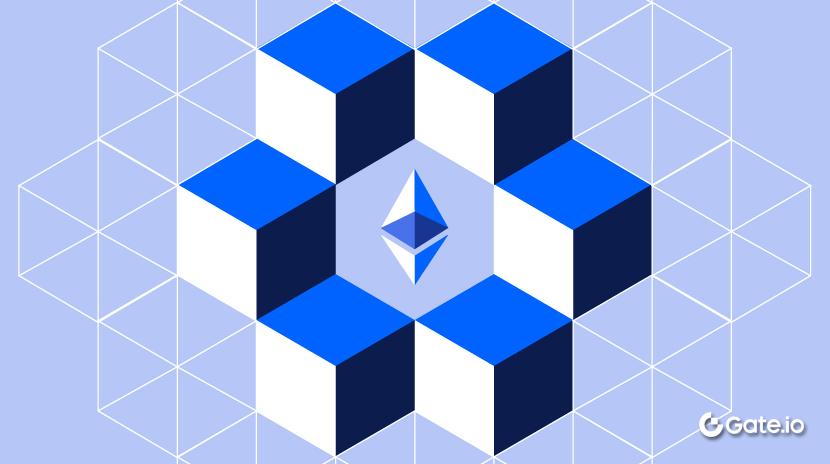
Bagaimana Mempertaruhkan ETH?
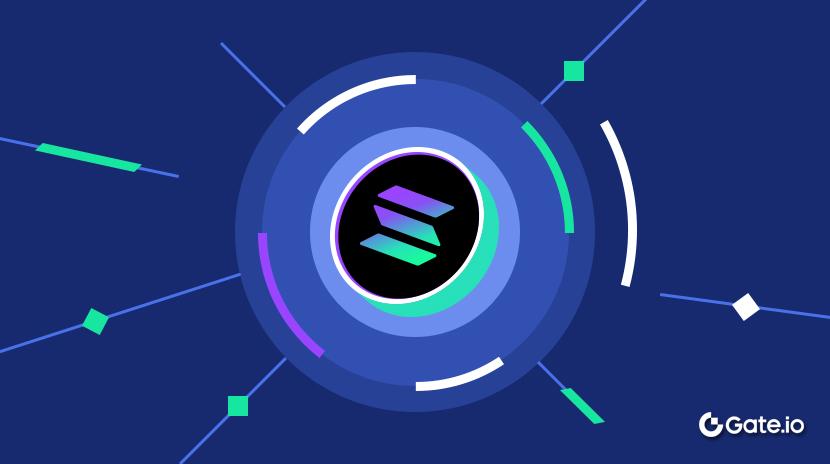
Apa itu Solana?
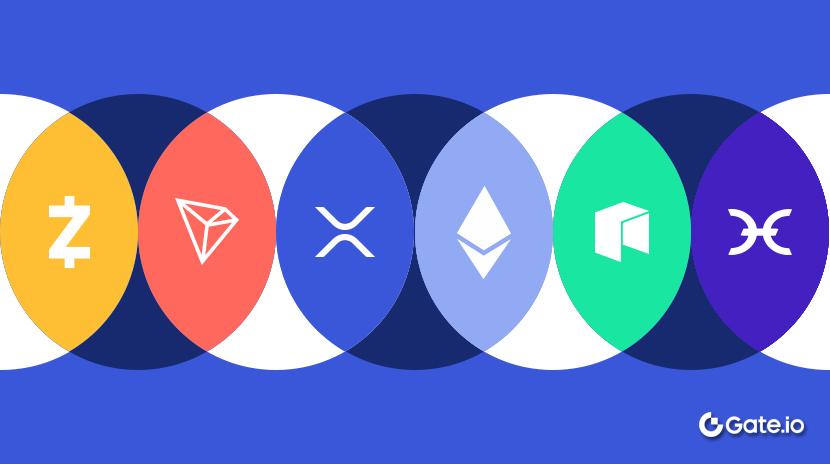
Apa itu Altcoin?

Apa itu Dogecoin?
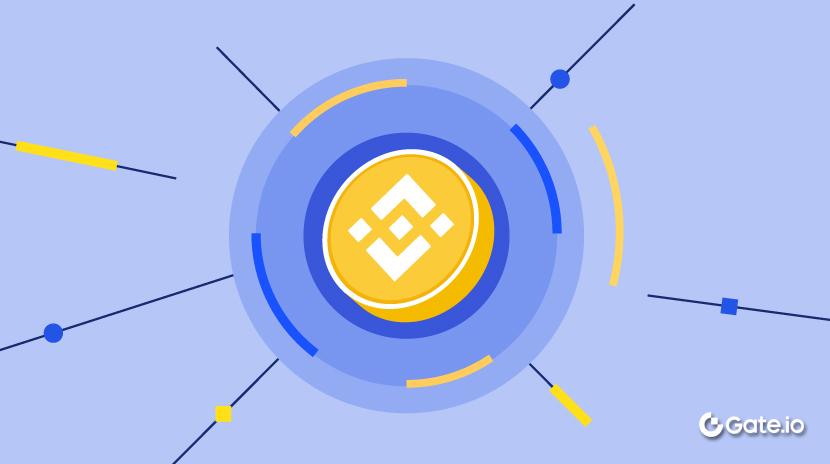
Apa itu BNB?
